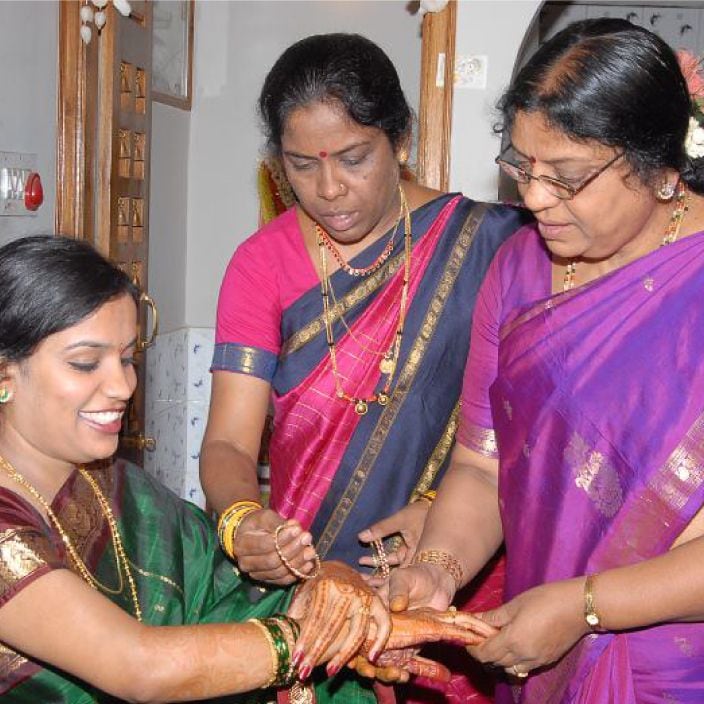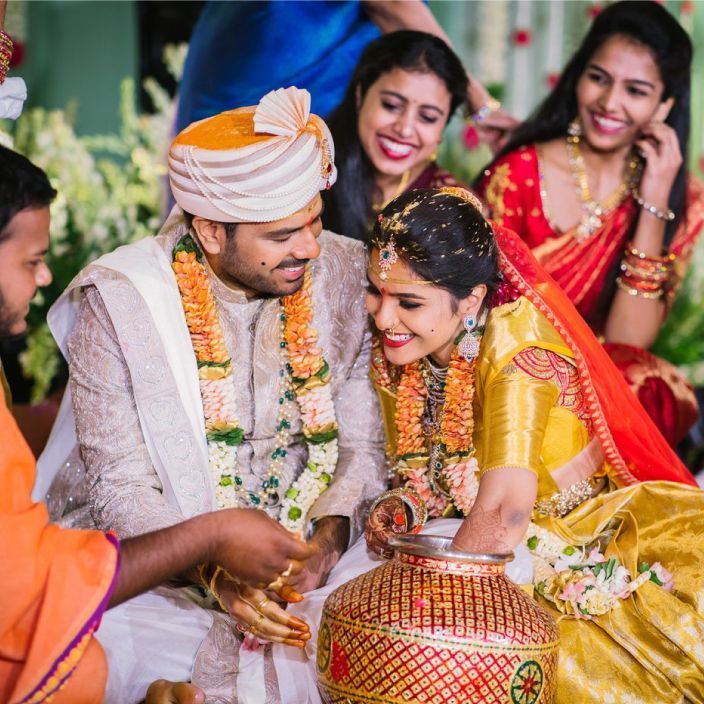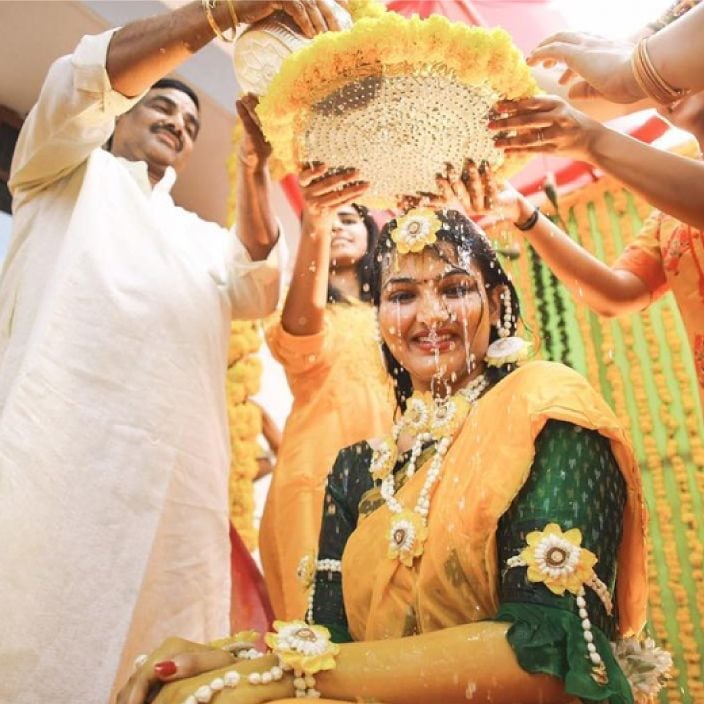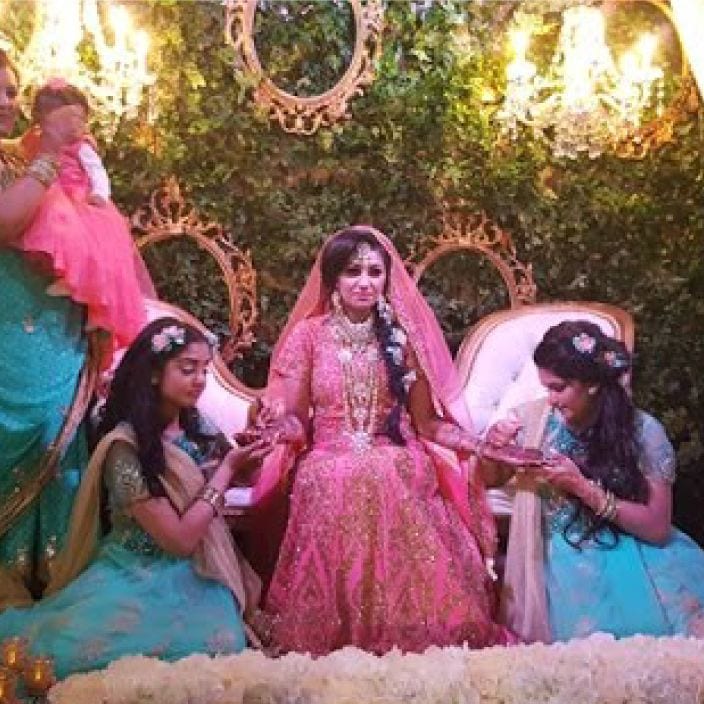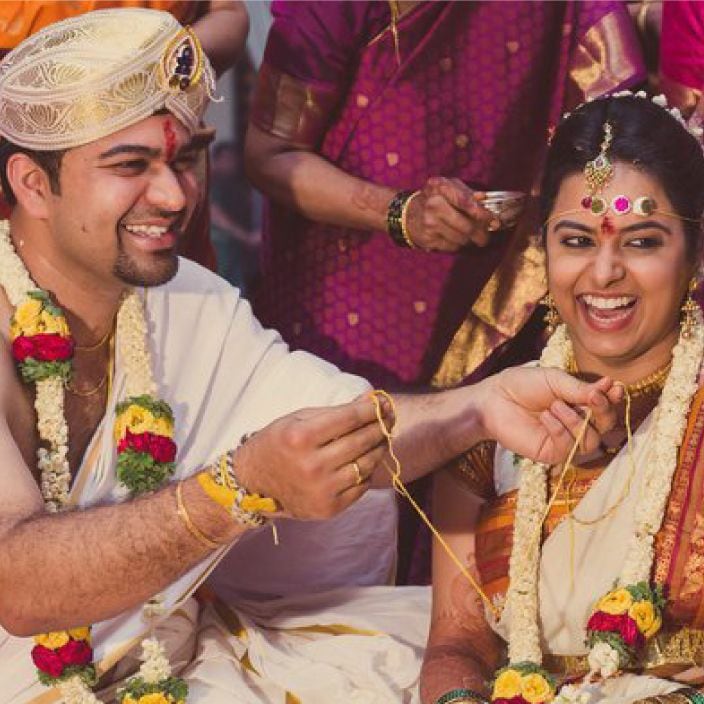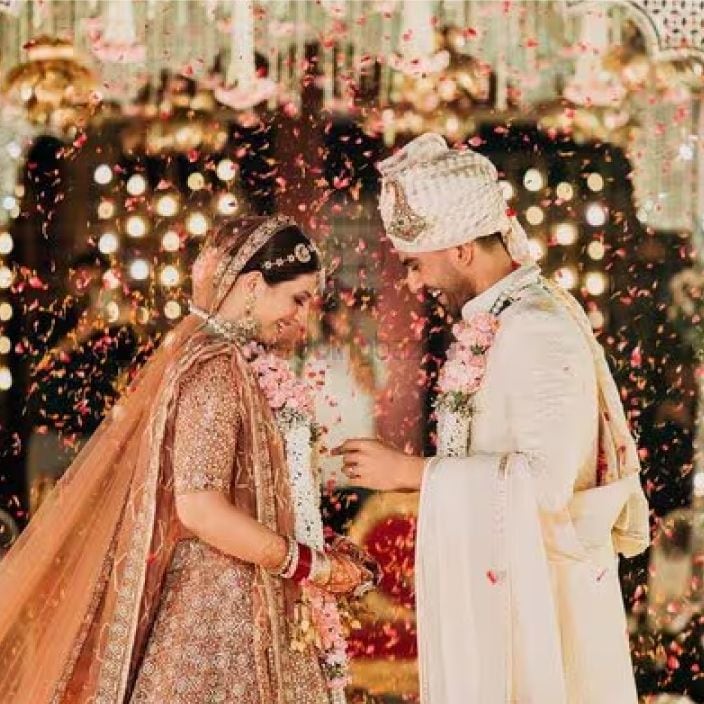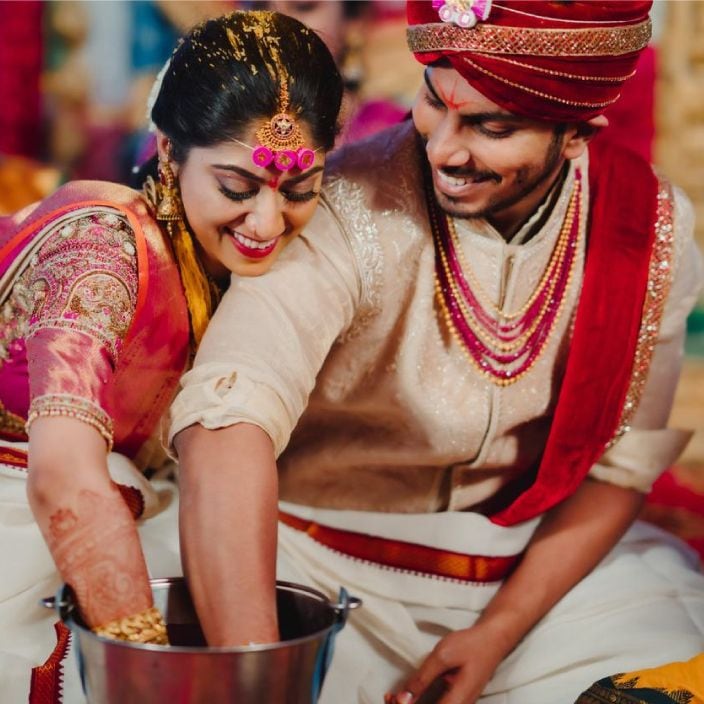For best prices and early deliveries, WhatsApp us at. 918488070070
Karnataka
Grand palaces, stunning temples, and UNESCO World Heritage Sites — Karnataka has it all. Abundant in natural beauty, the coastal state is also known for its spectacular beaches, hill stations, and waterfalls. A culturally diverse land, Hinduism is the dominant religion in Karnataka, followed by Jainism and Buddhism. The major ethnic groups are the Kannadigas, Konkanis, Tuluvas, and Kodavas. The rest of the population is made up of Tibetans, Siddhi Tribes, Muslims, Yeravas, and Christians. From the playful Kashi Yatra to the emotional Mangalsutra Dharana, Karnataka weddings are composed of elaborate rituals taken from the Vedas and other scriptures. These customs are accompanied by sumptuous feasts, Carnatic music, and elegant ensembles — making Karnataka weddings a refined, joyous, and spiritually grounded affair.
Tracing the Traditions
Karnataka communities are known for their simple sophistication. They are very loyal towards their roots and follow strict protocols for rituals. Karnataka weddings are elaborate yet understated events with ceremonies rich in meaning and symbolism. While certain aspects of the customs differ from community to community, most Hindu weddings in the state follow similar rituals.
It begins with Nischay Tamulam, the official engagement ceremony where the bride and groom exchange rings. A priest matches their kundalis (horoscopes), checking the alignment of the stars to fix an auspicious wedding date. This starts a string of pre-wedding rituals held before the wedding day itself. One important ritual is Naandi, where the couple offers the first wedding invitation to their family gods and asks for blessings. Another fun ritual is the Kashi Yatra, where the groom playfully pretends to give up worldly pleasures and threatens to go on a pilgrimage to Kashi. Just as he's about to leave the house, his uncle stops him by showing him the bride they've chosen for him. The skit ends with the groom agreeing to the wedding and the celebrations can proceed!
On the day of the wedding, the groom and his family perform Dev Karya. In this custom, they visit a nearby temple and bring all the items for the wedding rituals. These items are placed in front of a Ganesha idol, so that he may bless them before they go to the wedding. Another essential ritual, Chapra Pooja (involves worshipping the canopy or mandap to ensure the sanctity of the wedding space), takes place.
In Kannada traditions, the groom is treated like the incarnation of Lord Vishnu. The bride’s family greets the groom at the venue with much fanfare and escorts him to the mandap. Then, the priest performs Mandap Pooja and Var Pooja with the groom after which the bride makes her grand entrance. She enters covering her face with a fan of peacock feathers and a cloth curtain is held between the bride and groom in the mandap. Once the priest starts reciting the mantras for the wedding, the curtain is gradually removed, and the couple can finally see each other and exchange jaimalas (flower garlands).
The bride’s family gives her away in a ritual called Dhareherdu, similar to a North Indian Kanyadaan. During Saptapadi, the couple circles the sacred fire seven times. Each round represents a vow to stand by each other through thick and thin for seven lifetimes. The priest then performs the Thaali Ceremony, where the groom ties the sacred mangalsutra around the bride's neck, With the help of five married women signifying their marital bond. They are also guided to view the Arundhati Nakshatra, symbolizing unity and fidelity in marriage.
Karnataka weddings make room for some fun too. While still at the mandap, the couple play a fun game called Okhli. Here, the groom's ring is dropped in a huge bowl of milk or coloured water, and the couple competes to find the ring. The person who finds the ring first wins! The wedding ends with the emotional Vidaai ceremony, during which the bride leaves to go to her new home. At her in-law’s home, they perform Griha Pravesh, where the bride steps over a threshold and kicks a vessel filled with rice—symbolising the start of a new chapter in her life.
Wedding Attire
Karnataka is famous for its silks sarees such as Mysore silk sarees, Arani silk sarees, and Kora silk sarees. These traditional weaves are a popular choice for brides as well as wedding guests. Since sarees are becoming less common for modern Indian women, weddings and special occasions are a great way to dress traditionally and connect with one’s heritage.
The bride wears a traditional nine-yard Navari saree or six-yard Kanjeevaram saree on the wedding day. Each community has its own distinct way of draping the saree and preferred bridal colours. For instance, in the Baliga community, the bride wears a white saree with brightly coloured borders. Kannadiga brides prefer bold sarees with gold brocade borders draped in the Coorgi style.
Jewellery is a defining feature of the Kannada bride’s look. Gold jewellery, including Hara (Necklace), Jhumkas (Earrings), Choodas (Bangles), maang tikka, matha patti, and rings is the traditional choice. Karnataka is known for its temple jewellery, a type of gold jewellery with motifs of temples, gods, and goddesses. Many wedding ornaments feature designs of Goddess Lakshmi, as she brings luck and prosperity to the wearer. The Lakshmi Sara is one such popular necklace, made of small gold coins engraved with the image of the deity.
Besides the standard jewellery sets, certain pieces are unique to Kannada brides. In the Kannadiga community, the bride wears the Netri Chutti or a special Maang Tika on the forehead. She is also seen with Muthina Vale Jhimki, which are beautiful earrings studded with rubies, pearls, or diamonds. Like a Maharashtrian bride, she also wears green glass bangles on her wrists, which symbolises a married woman.
Another staple jewellery is the Entele Sara, a layered chain made of gold beads. The Mavinakayi Addigai is a necklace adorned with mango-shaped gold motifs, green and red stones, and pearls. This piece is similar to the Manga Mala found in Kerala. A bridal must-have is the Navilu Daabu, a waist ornament adorned with traditional temple designs and red stones. Her hair is beautifully styled in the classic high bun with a long braid, fresh flowers, and ornaments.
Once married, the bride wears a Mangalsutra, a necklace made of gold and black beads and the Hebbat or toe ring, typically made of silver, on their fourth toe as symbols of marital status.
The groom’s wedding look is more straightforward in comparison but still elegant and poised. As per custom, he wears a white dhoti, an angavastram, which is a cloth draped over the shoulders, and a Mysore Peta, a traditional style of turban. The groom may change into a silk kurta set or embroidered sherwani for the poojas and the wedding reception.
Traditional Cuisine
Karnataka's cuisine is known for its simple yet delicious dishes made with local ingredients. Traditionally, Kannada wedding meals are served on fresh banana leaves. Guests often sit cross-legged on the floor or on long tables and servers come around with food.
Rice and ragi are popular in South Karnataka, while jolada rotti (sorghum flatbread) is a staple in the north. A highlight of most Kannada weddings is Bisi Bele Bath, a savoury rice and lentil dish infused with spices and vegetables.
Another favourite dish is Ragi Mudde, a nutritious ball of ragi flour typically eaten with a spicy curry or sambar. The wedding feast is incomplete without a sweets buffet, including Mysore Pak and Rave Under. Guests will find themselves spoiled for choice with treats such as Paysam, Karadantu, Belgaavi Kunda, and Dharwad pedha.
Other popular dishes served at Karnataka weddings include rasam, sambar idli, uppittu, benne dose, masala dosa, and maddur vade. Obbattu is another delightful dessert served during weddings. Guests also indulge in various refreshments like neer more (buttermilk), tender coconut water, and badam milk.
Cultural Decor
Decor at Karnataka weddings has evolved beyond the conventional standards of silk drapes and floral arrangements. Depending on their aesthetic preferences, couples may choose various decor themes, such as pastels, greens, or classic white and gold.
During poojas, flowers like marigolds and jasmine are popular decorations. The mandap where the rituals occur is always decked out with florals as the backdrop and torans around the ceremonial stage.
Following the Chhapra pooja, a structure made of coconut leaves tied together with banana stalks is erected outside the house hosting the marriage. For the main wedding ceremony, the decor is vibrant and tasteful—featuring flowers, banana leaves, and silk drapes. Various rituals require different items, often including Ganesh idols, Chokhi for fire, and decorative plates for pooja offerings.
